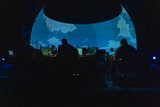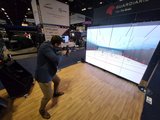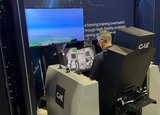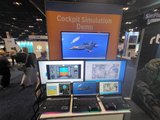I/ITSEC 2023: How VR and AR are reshaping the training capabilities for the Pentagon
VR and AR can reduce the time and resources required to prepare soldiers. (Photo: Booz Allen Hamilton)
Aware of the need to improve soldiers training to face various threats in multi-domain theatres, the Pentagon has been increasing efforts to enhance the use of virtual reality (VR) and augmented reality (AR) solutions and improve its training capabilities.
AR and VR technologies support the development of new advanced systems, which can better recreate the complexities of a changing battlespace.
The US Department of Defense’s (DoD’s) branches and agencies have been working on multiple programmes in this realm. In its FY 2024 budget proposal, the Department has requested more than US$20 million to progress with the deployment of gaming technology
Already have an account? Log in
Want to keep reading this article?
More from I/ITSEC 2023 | View all news
-
![US Marine Corps outlines next steps to improve synthetic training capabilities]()
US Marine Corps outlines next steps to improve synthetic training capabilities
The service has shown an interest in a range of training solutions from individual to battalion levels and plans to award multiple contracts ahead of new programmes set to run from FY2024 to FY2031.
-
![I/ITSEC 2023: VirTra debuts integration of VBS4 into its simulators]()
I/ITSEC 2023: VirTra debuts integration of VBS4 into its simulators
VirTra has unveiled the integration of VBS4 and BlueIG into its simulator systems with the aim of enhancing the capabilities of its technology for military training.
-
![I/ITSEC 2023: CymSTAR introduces CymLITE Series Deployable Air Refueling Trainer]()
I/ITSEC 2023: CymSTAR introduces CymLITE Series Deployable Air Refueling Trainer
The company has also used its platform at I/ITSEC 2023 to announce a new partnership with the Switzerland-based firm EDMS.
-
![I/ITSEC 2023: Guardiaris unveils the new generation of its Small Arms Mobile Trainer]()
I/ITSEC 2023: Guardiaris unveils the new generation of its Small Arms Mobile Trainer
SAMT, a laserless, plug-and-play mobile system, can incorporate small arms, anti-tank weapons, military vehicles and remote weapon stations.
-
I/ITSEC 2023: CAE unveils US Air Force digital F-16 cockpit
For the first time CAE exhibited a digital F-16 cockpit integrated with the Simulators Common Architecture Requirements and Standards (SCARS) marking a major step forward in training equipment virtualisation.
-
![I/ITSEC 2023: Can military forces solve integration issues in the training domain?]()
I/ITSEC 2023: Can military forces solve integration issues in the training domain?
Deploying several simulation solutions with different operating systems and programming languages has been a challenge for armed forces worldwide.


























